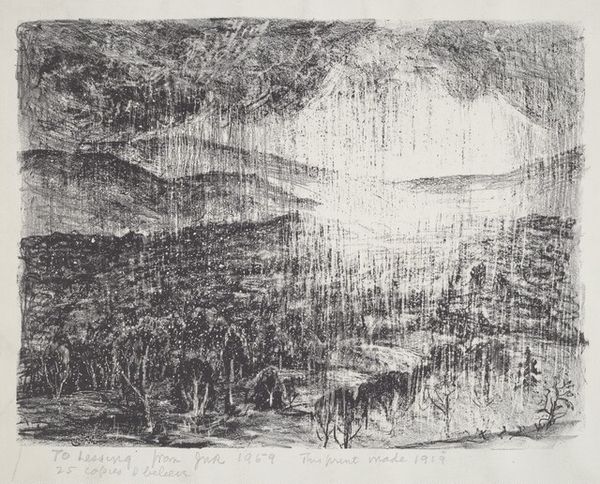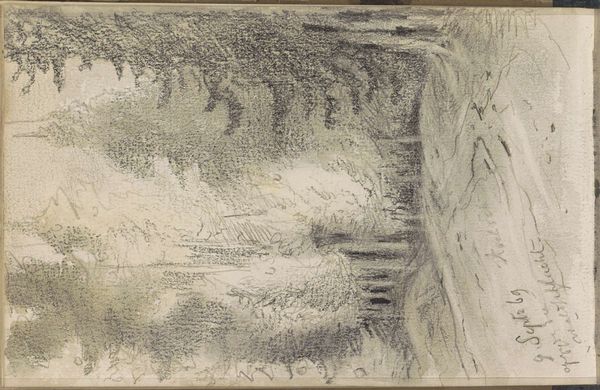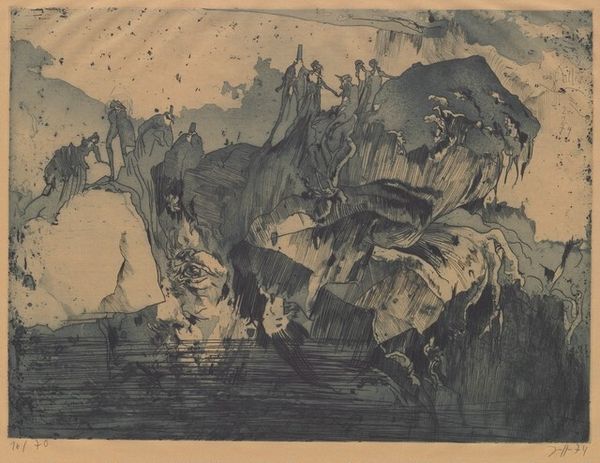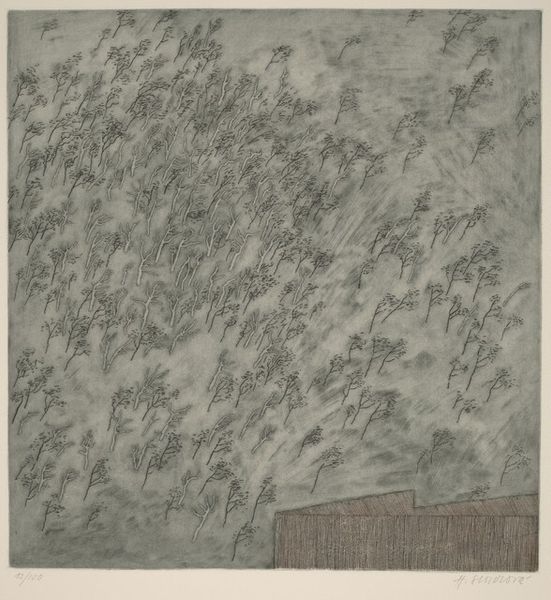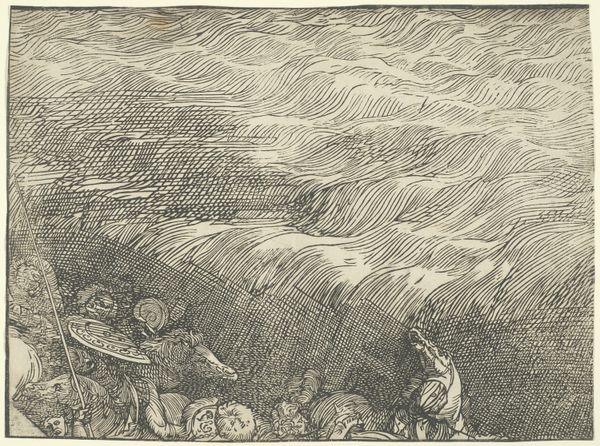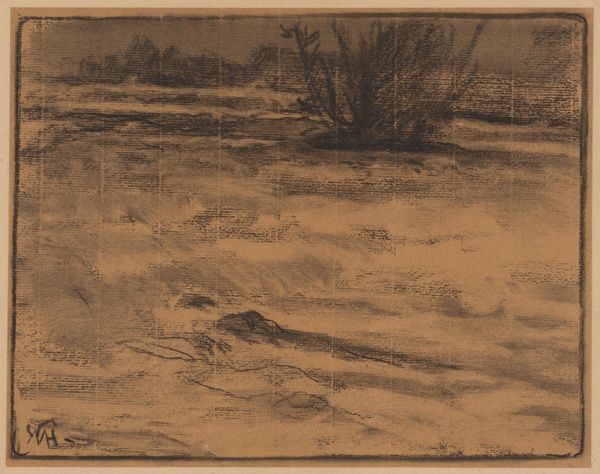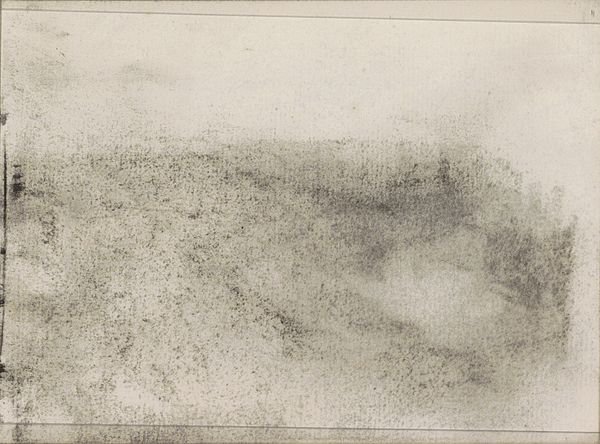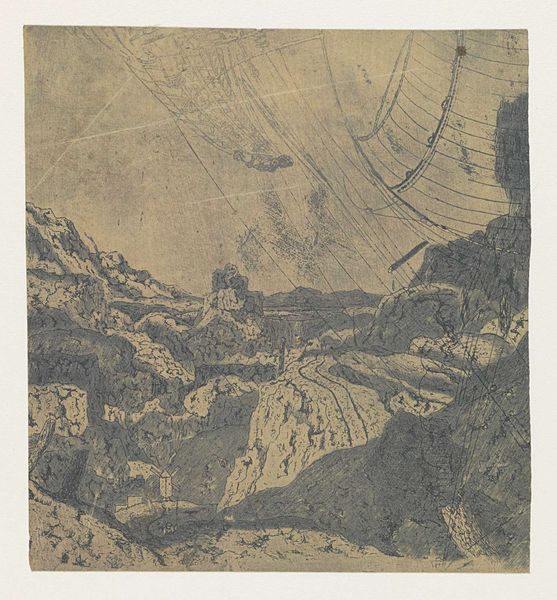
drawing, print, etching
#
drawing
# print
#
etching
#
landscape
#
etching
#
abstract
Copyright: National Gallery of Art: CC0 1.0
Curator: "Angry Sky," made in 1959, is a striking print by Gabor Peterdi, an etching that immediately pulls you into a tumultuous landscape. Editor: Oh, absolutely turbulent. The density of lines! It’s as if Peterdi etched his raw, visceral energy directly onto the plate. The sky really does feel angry. I see rain, or perhaps some other form of chaotic weather beating down on everything below. Curator: He certainly captures nature's more ferocious side. Peterdi emigrated to the US in the 1930s, and his work often explores themes of displacement and the power of nature. One might argue that these prints were a kind of reaction against human violence. Editor: Right. It seems to say something bigger too – you know, about the precariousness of existence, like humanity itself is on the verge of being swallowed up by the landscape's ferocity. Curator: Exactly! Note how the abstract shapes are vaguely suggestive, we get hints of familiar things without clarity, evoking this kind of instability. Even its graphic nature and strong contrast heightens the emotional tenor of it all. It is quite the evocative landscape, given its complete abstraction! Editor: Its monochrome is perfect for the mood – you get lost in all shades of brooding gray! It creates such depth too. I mean the lack of bright colors intensifies that feeling of foreboding, that the sky’s anger has leeched all other expression. Even light! Curator: Yes, and that texture he achieves is extraordinary given that he’s working with lines, rather than planes of colour. He creates such volume and dynamism. Editor: Looking at the time in which it was made, it's difficult not to consider its relationship to the cultural politics surrounding Abstract Expressionism, where gestural mark-making became almost an emblem of freedom in a cold war context. Perhaps there’s also something deeply individual about all those personal frenetic lines. Curator: A very potent point. “Angry Sky” remains resonant, prompting us to think about both environmental fragility and our place in it. It makes you consider those storms you've weathered—literally and metaphorically—doesn't it? Editor: Absolutely. Thanks, this was so evocative. I now know just how good, I have it. I'm leaving here thinking deeply about how human turmoil and landscape are, or perhaps can never truly be disentangled!
Comments
No comments
Be the first to comment and join the conversation on the ultimate creative platform.

